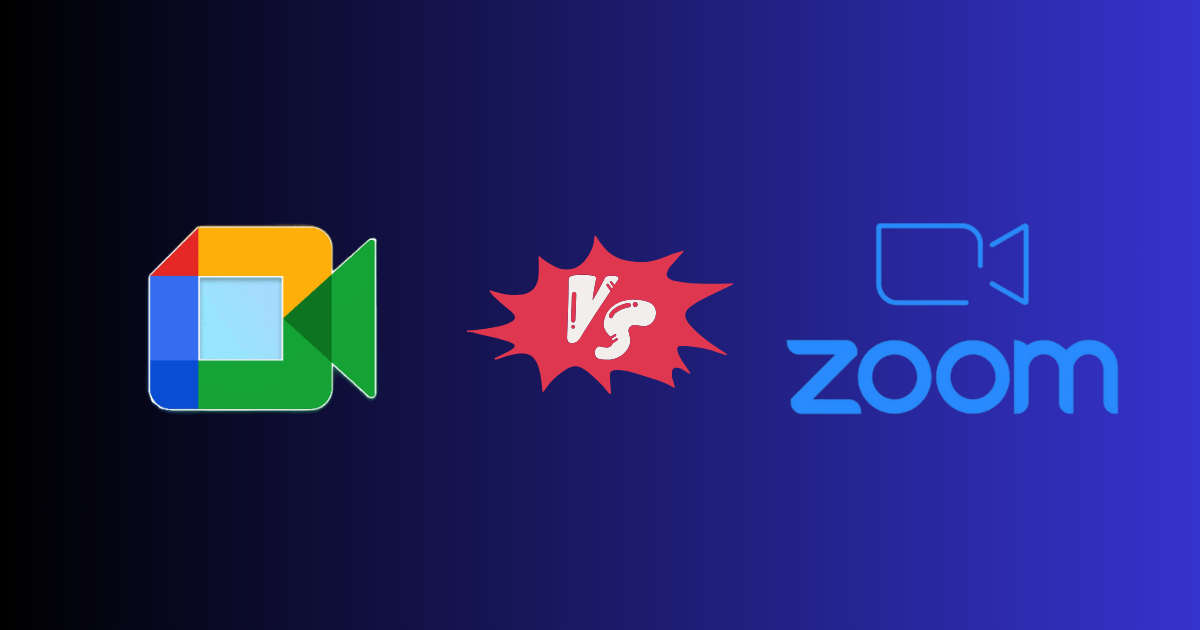Video conferencing has become an integral part of communication in today’s digital world. With the rise of remote work and virtual meetings, it’s important to compare and analyze different video conferencing platforms. In this comparison, we will explore the key differences between Google Meet vs Zoom to help users make an informed decision about which platform best suits their needs.
Google Meet vs Zoom: Features
A. Google Meet
1. Supported platforms: Google Meet is accessible on various platforms, including web browsers, Android, and iOS devices.
2. Meeting duration: With a standard Google account, meetings can last up to 60 minutes, while G Suite users can host longer meetings.
3. Participant limits: Google Meet allows up to 100 participants in a meeting, making it suitable for larger gatherings.
4. Screen sharing options: Users can easily share their screens during meetings for collaborative work and presentations.
B. Zoom
1. Supported platforms: Zoom is compatible with web browsers, Windows, macOS, iOS, and Android devices, offering widespread accessibility.
2. Meeting duration: Free Zoom meetings are limited to 40 minutes, while paid plans allow for longer meetings.
3. Participant limits: Zoom’s free plan supports up to 100 participants, with options to host larger meetings on paid plans.
4. Screen-sharing options: Zoom provides robust screen-sharing features, including the ability to share specific application windows.
Google Meet vs Zoom: Security and Privacy
A. Google Meet
1. Security measures: Google Meet employs encryption and secure meeting codes to protect user privacy and prevent unauthorized access.
2. Privacy policy: Google’s privacy policy outlines data usage and protection measures to ensure user information is safeguarded.
B. Zoom
1. Security measures: Zoom has implemented end-to-end encryption and security features to address privacy concerns and prevent security breaches.
2. Privacy policy: Zoom’s privacy policy details its commitment to protecting user data and ensuring compliance with privacy regulations.
See Also: Bluehost or Wp Engine: Which Is Better and Why?
Google Meet vs Zoom: User Interface
A. Google Meet
1. Interface design: Google Meet offers a simple and intuitive interface, making it user-friendly for both hosts and participants.
2. Ease of use: The platform’s straightforward layout and navigation contribute to a seamless user experience.
B. Zoom
1. Interface design: Zoom’s interface is designed to be user-friendly, with easy access to essential meeting controls and features.
2. Ease of use: Zoom provides a user-friendly experience, with clear options for hosting, joining, and managing meetings.
Google Meet vs Zoom: Cost
A. Google Meet
1. Pricing plans: Google Meet is included with G Suite plans, with no additional cost for G Suite users.
2. Free features: Google Meet offers essential video conferencing features for free, including 60-minute meetings and screen sharing.
B. Zoom
1. Pricing plans: Zoom offers free and paid plans, with additional features and longer meeting durations available on paid subscriptions.
2. Free features: The free version of Zoom provides basic video conferencing capabilities, including 40-minute meetings and screen sharing.
Google Meet vs Zoom: Integration and Compatibility
A. Google Meet
1. Integration with other apps: Google Meet integrates seamlessly with other Google Workspace apps, such as Gmail and Google Calendar.
2. Compatibility with devices: Google Meet is compatible with various devices and operating systems, ensuring widespread accessibility.
B. Zoom
1. Integration with other apps: Zoom offers integrations with popular productivity and collaboration tools, enhancing its functionality for users.
2. Compatibility with devices: Zoom is compatible with a wide range of devices, including desktops, laptops, and mobile devices, for versatile usage.
Conclusion
In conclusion, both Google Meet and Zoom offer robust video conferencing capabilities with unique features and advantages. The choice between the two platforms ultimately depends on specific user needs, such as meeting duration, participant limits, and integration with existing workflows. By considering factors such as features, security, user interface, cost, and compatibility, users can make an informed decision to select the most suitable video conferencing solution for their requirements.
Reference articles
https://workspace.google.com/resources/video-conferencing/
